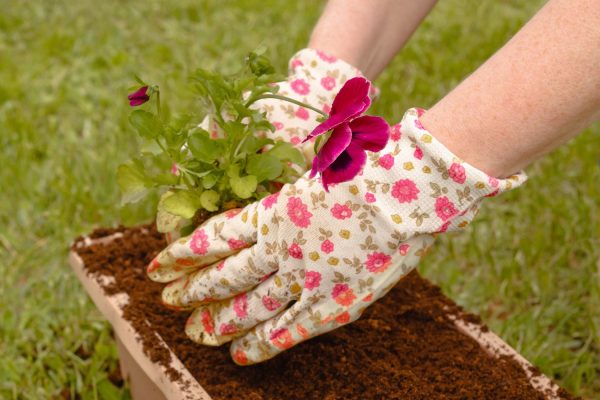
A well-designed garden transforms your outdoor space into a sanctuary, and rectangular planters are one of the most versatile tools to achieve this. Whether you’re working with a sprawling backyard or a compact patio, these planters allow you to experiment with layouts, textures, and plant combinations. Let’s explore creative and practical ways you can use rectangular planters to design a visually appealing and functional garden.
Frame Your Garden Space
Rectangular planters are excellent for defining garden spaces. You can use them to frame walkways, patios, or seating areas, creating distinct zones that feel intentional and organized. For instance, place planters along the edges of a pathway and fill them with lush greenery or colorful flowers to guide the eye and enhance the visual flow of your garden.
If you have a patio or deck, consider positioning planters to establish a natural border. This approach adds a sense of enclosure without the need for permanent structures. You can learn more about choosing the right size and material for planters that fit your space seamlessly.
Create Vertical Interest with Tiered Arrangements
Gardens aren’t limited to ground-level layouts. You can add depth and visual intrigue by arranging rectangular planters in a tiered setup. Place large rectangular planters at the back and smaller ones in front to create a layered effect. This works particularly well in narrow spaces, as it maximizes the use of vertical dimensions while maintaining a tidy appearance.
Plant a mix of textures and heights to emphasize the tiered look. For example, tall grasses or shrubs should be used in the back planters, medium-height perennials should be used in the middle, and trailing plants like ivy or petunias should be used in the front. This combination not only enhances aesthetics but also contributes to a thriving micro-ecosystem by accommodating different sunlight needs.
Build a Functional Kitchen Garden
Transform part of your garden into a kitchen garden by using rectangular planters to grow herbs, vegetables, and edible flowers. Their structured design makes it easy to organize plants in rows or clusters for optimal growth. Choose materials like PVC or cedar for your planters to ensure durability and resistance to outdoor elements.
For a balanced and productive layout, dedicate one planter to herbs like basil, thyme, and parsley, and another to leafy greens such as spinach or lettuce. You can also apply principles of companion planting to maximize space and encourage healthy growth; for instance, pair tomatoes with basil to enhance flavor and deter pests. The versatility of large rectangular planters allows you to reposition them as needed to capture sunlight or protect plants during harsh weather.
Use Planters as Privacy Screens
If your garden feels too exposed, large rectangular planters can serve as stylish privacy screens. Select taller plants like bamboo, ornamental grasses, or climbing vines to create a green barrier that blocks unwanted views and adds texture to your garden’s design.
Position these outdoor rectangular planters along fences, balconies, or property lines for maximum impact. Unlike permanent walls or hedges, planters give you the flexibility to adjust or rearrange your setup as your needs evolve. Plus, their portability makes it easy to experiment with different placements until you achieve the desired level of privacy.
Emphasize Seasonal Themes
One of the joys of gardening is celebrating the changing seasons, and outdoor rectangular planters offer the perfect canvas to showcase seasonal plants. During spring, fill your planters with tulips, daffodils, or hyacinths for a burst of color. As summer approaches, transition to sun-loving blooms like geraniums or begonias.
In autumn, you can switch to mums and ornamental kale for a cozy, warm palette. During winter, consider evergreen arrangements or decorative branches accented with fairy lights. By rotating plants seasonally, you’ll keep your garden fresh and engaging year-round.
Combine Planters with Outdoor Furniture
Integrating large rectangular planters into your garden’s seating areas creates a harmonious blend of functionality and style. For example, place planters with fragrant flowers or herbs near benches or dining tables to enhance the sensory experience of your garden.
You can also use planters as dividers within larger seating areas. This approach not only delineates space but also softens the overall design by introducing natural elements. For a cohesive look, match the planter material or color with your furniture’s design elements.
Experiment with Color and Texture
Outdoor rectangular planters give you a platform to play with color and texture combinations that complement your garden’s theme. For a monochromatic scheme, choose plants in similar shades but vary the textures—such as pairing feathery ferns with smooth-leafed succulents.
Alternatively, create bold contrasts by combining vibrant flowers with muted greenery. Using planters in neutral tones helps the plants stand out, while brightly colored planters can add an artistic touch to the overall design. When experimenting, think about how these elements interact under different lighting conditions throughout the day.
Incorporate Water Features
For an unexpected twist, use rectangular planters to house small water features. You can convert a planter into a mini pond or fountain by adding a waterproof lining and aquatic plants like water lilies or lotuses. The soothing sound of water enhances the ambiance and invites wildlife, such as birds and butterflies, into your garden.
If you opt for this idea, position the water feature near a seating area or at a focal point to maximize its impact. Maintenance is minimal, and the result is a serene addition that elevates your garden’s character.
Conclusion
Outdoor rectangular planters are more than just containers for plants—they’re tools that help you design a garden tailored to your space and preferences. By framing spaces, adding vertical interest, or incorporating functional elements like privacy screens and water features, you can create a dynamic and inviting outdoor environment. Take inspiration from these ideas and let your creativity guide you as you style your garden.

